Log in or create new account to save this product to your wishlist.
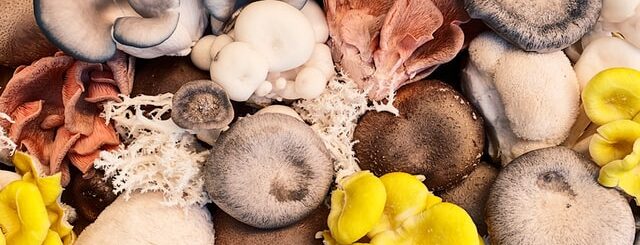
How to identify, control, and prevent mushrooms on your lawn
We might love mushrooms with our pasta, but most of us don't want mushrooms on our lawns. But, fungi is an important part of your soil's ecosystem.
🌱 All important maintenance moments for your lawn during the year. Leave your email and we will send you the lawn calendar for free.
Enter your email
Receive the lawn calendar in the mail
Enjoy a green lawn all year round!

- Order by 2PM = shipped today
- 250.000+ satisfied customers!
- 60 day satisfaction guarantee
You’re probably reading this article because mushrooms and toadstools keep appearing on your lawn. Perhaps you’re wondering what that says about the quality of your soil? And maybe you’re looking for ways of getting rid of the problem once and for all? Well, you’re in luck: this article is all about how to identify, control, and prevent mushrooms on your lawn.
- What are mushrooms & toadstools?
- So mushrooms are a good thing?
- Why do mushrooms grow on my lawn?
- Killing the mushroom on the surface doesn’t kill the fungus
- How & when do mushrooms pop up on your lawn?
- Prevent Mushrooms by Removing the Food Source
- Can I eat lawn mushrooms?
- What does a poisonous UK mushroom look like?
- So, how do I identify my lawn mushrooms?
- What are (and why do I get) Fairy rings on my lawn
- Can I get rid of fairy rings?
- How to get rid of mushrooms on my lawn? – 7 ways
- FAQS
But before we wipe out those pesky shrooms, it’s time for a quick reality check .
Because lawn mushrooms aren’t actually particularly harmful for your lawn and are often considered a good indicator of nutritious soil. Nonetheless, not everyone welcomes these cute little pixie houses, and some fungi – as you know – can be deadly, so you might want to get rid of them.
In this article, I’ll explain how to identify and control the mushrooms on your lawn, with some tips that will help you prevent their return.
Ready? Let’s go.
What are mushrooms & toadstools?
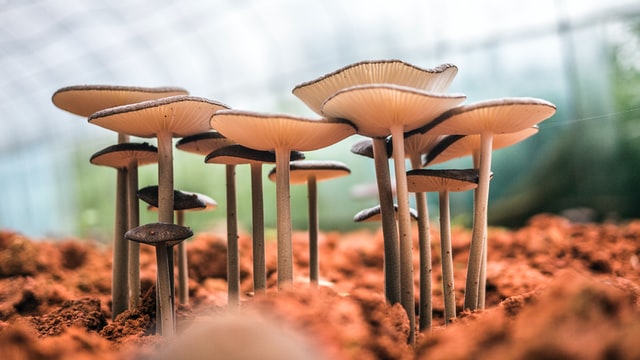
It might seem like an odd question because – let’s face it – most of us know what a mushroom or a toadstool is.
Or do we?
Mushrooms and toadstools typically live on the soil surface very briefly, and they usually disappear on their own.
But more interestingly, a fungus is considered neither plant nor animal. They’re not plants because they don’t photosynthesise to feed themselves, and they’re not animals because they don’t ingest their food like creatures of the animal kingdom.
Fungi is responsible for almost all of the food we produce and many of our processed materials. And we should also be thanking the fungal kingdom for many of our most important medical breakthroughs, helping treat a vast variety of physical and mental conditions.
So mushrooms are a good thing?
Absolutely.
But that doesn’t mean you want them spreading across your lawn, of course.
Why do mushrooms grow on my lawn?
What you probably don’t realise is that the mushroom – the little fruiting body that appears above the soil surface – is just the tip of the iceberg.
Because all soil contains fungi. They’re an essential constituent part of a healthy soil ecosystem. They help maintain plant health and the delicate balance of your soil’s nutrition.
Fungi live underground. But when the conditions are right, those underground fungi emerge as “fruit” above the soil surface in the guise of mushrooms, just like fruit appearing on an apple tree.
Remember, fruit is a plant’s reproduction mechanism – the fruit contains the seed that helps the plant multiply. And just like apples, mushrooms and toadstools appear when the weather conditions are right, allowing the fungus to spread its spores.
Killing the mushroom on the surface doesn’t kill the fungus
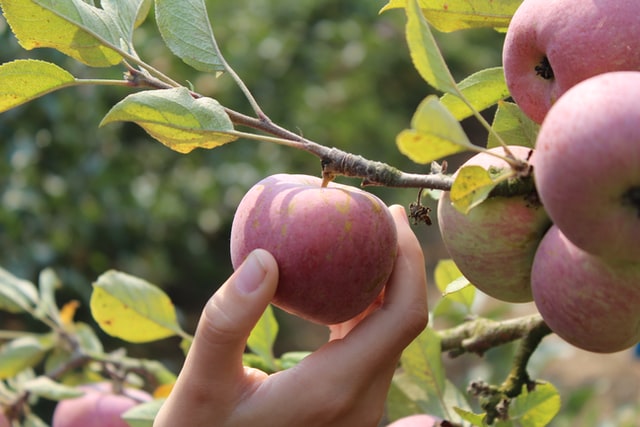
The apple tree analogy is a good one because the tree survives after you’ve picked the apple. Removing the apple from the tree doesn’t kill the tree, just like destroying the mushroom doesn’t destroy the fungus; it just removes the “fruit”.
In reality, there’s little chance of destroying the fungus that lives underground – and, in many cases, it’s not good for your soil to sanitise it in this way.
But what you can do is understand the conditions that promote surface fungal growth to prevent the mushrooms from appearing on the surface in the first place.
How & when do mushrooms pop up on your lawn?
Mushrooms and toadstools often appear on newly laid turf, and this is because laying turf disturbs the soil, which “awakens” fungal spores that may have been dormant.
The ideal conditions for mushrooms are:
- Moist,
- Humid, and
- Shady
So, you’re more likely to find lawn mushrooms in shady areas of your lawn, often around trees. This is because fungi feed on decaying organic waste, such as fallen leaves, animal waste, grass cuttings, buried wood, dead tree roots, and tree stumps.
In other words, wherever there’s a tree, there’s usually a good food supply in the guise of fallen leaves, decaying twigs, and dead roots.
Prevent Mushrooms by Removing the Food Source
One way of preventing mushrooms from appearing on your soil surface is to remove the food source by raking up dead organic matter (aka dethatching or scarifying).
However:
When the fungus feeds on dead organic matter on the surface, it releases beneficial nutrients into your soil, which is good for your lawn and garden plants.
It’s a conundrum, isn’t it? Should they stay, or should they go?
Remember: the presence of lawn mushrooms and toadstools is a good sign that your lawn is in a good state.
Can I eat lawn mushrooms?

The general rule of thumb here is:
Never eat a wild mushroom unless you’re 100% certain it’s edible.
There are more than 15,000 fungal species in the UK, living in the ground, air, and water. Not all of them produce “mushrooms” as such – think about the black mould you get inside old houses, and not all of them are poisonous.
And while most lawn mushrooms are not poisonous, I wouldn’t recommend picking them and sauteing them in butter.
What does a poisonous UK mushroom look like?
Again, just because the mushroom you discover on your lawn doesn’t appear on the Woodland Trust’s list of the seven most poisonous UK mushrooms, it doesn’t necessarily mean you should eat it.
You must be very confident that a mushroom is edible before you attempt to eat it because some mushrooms are deadly (and some will make you see flying kangaroos drifting through a marshmallow-coloured ether).
This list is just for reference.
1. Deadly Webcap
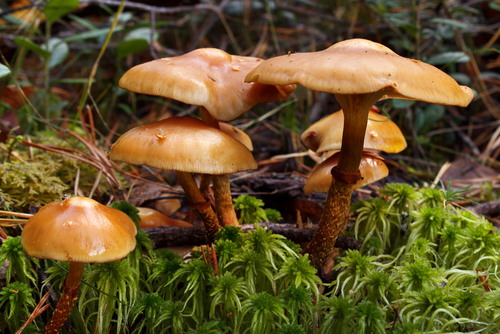
The Cortinarius rubellus is commonly known as the Deadly Webcap, so the name alone should get you running for the hills.
These fungi appear between August and November in spruce and conifer woodlands. They’re relatively rare in the UK, but they cause many European deaths each year because they resemble the rather delightful chantarelle and the hugely psychedelic Pscilocybe species (aka Magic Mushroom).
Consume Deadly Webcap cause a litany of horrible physical responses, including vomiting, kidney failure, and flu-like symptoms. And potential death.
Don’t eat them.
2. Death Cap
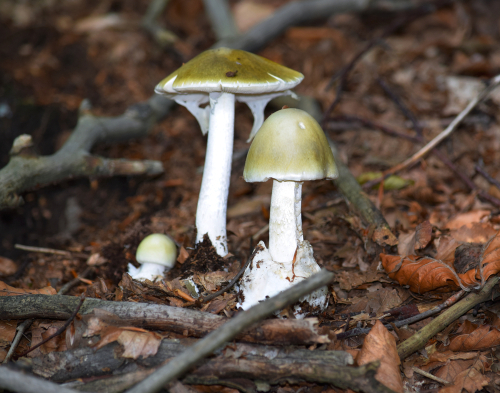
Again, the Amanita phalloides is frequently referred to as the Death Cap mushroom, which – once more – kind of says it all. This little number is commonly found in broadleaved woods, growing on the ground between August and November.
Consuming just half a Death Cap can lead to a painful, rapid death.
Yuck!
3. Destroying Angel
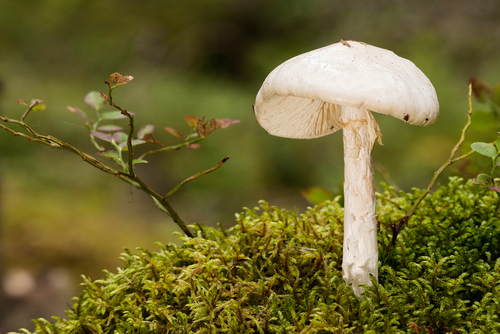
There’s a commonality here, isn’t there?
Basically, if you come across a mushroom with a name like a horror film, it’s a not-so-subliminal suggestion that consumption leads to not many of us leaving this place alive.
And although the Amanita virosa or Destroying Angel is quite an attractive, pure white mushroom, the loveliness stops there. Because just a single piece of a Destroying Angel is enough to destroy your kidneys and liver. And then that’s pretty much it. Out for the count – forever.
These deadly mushrooms appear from July to November, found on the ground in woodlands, especially around birch trees.
4. Funeral Bell
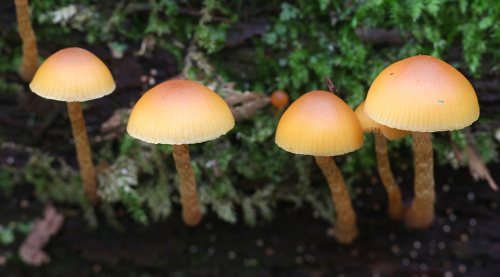
Well, it just gets better, doesn’t it? This one not only sounds like a Sylvia Plath novel, but it will kill you to death in literally a couple of hours.
Its Latin name, Galerina marginata, also sounds like a delicious pizza. But it’s not.
Luckily we don’t get a lot of Funeral Bells in the UK, but when they do pop up, it’s between August and November, in mixed or coniferous woods, growing on decaying wood.
5. Fool’s Funnel
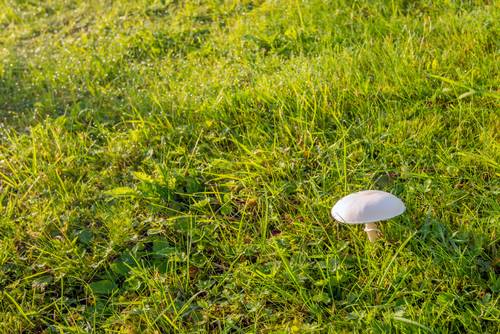
The Clitocybe rivulosa, aka the Fool’s Funnel, is also referred to by the delightful moniker of “the sweating mushroom”. And that’s because the consumption of this bad boy induces excessive salivation, sweating, and eye watering – so, basically, you resemble a rabid dog after chomping down on a Fool’s Funnel.
Appearing in lawns and meadows from July to December, these mushrooms grow close to edible mushrooms, so take extra care.
Consumption is rarely fatal if you’re healthy, but who’d want to risk it? It can kill in severe cases, but – hey – who really wants to look like Cujo on a rampage?
6. Panther cap
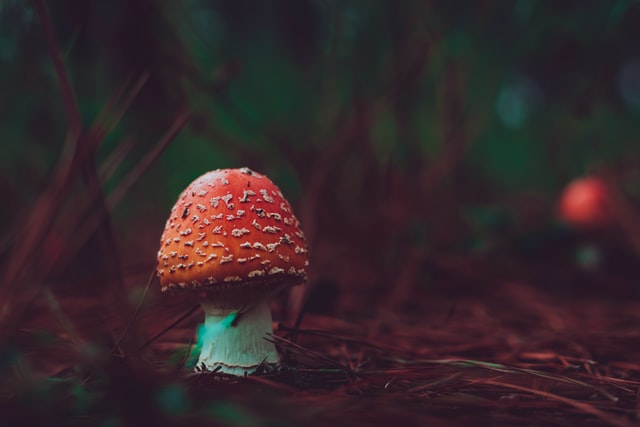
This attractive Amanita pantherina mushroom is intensely poisonous and causes intense sickness.
However, the principal effects are felt within the central nervous system, causing vivid hallucinations, delusions, and convulsions. In some cases, consumption is fatal.
7. Angel’s Wings
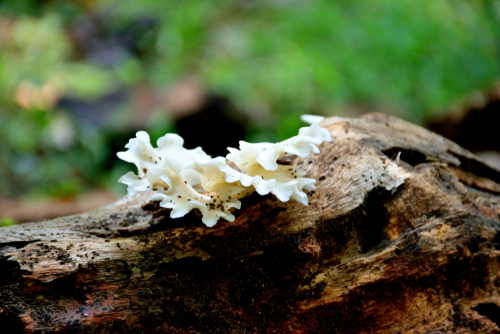
Last but not least comes Angel’s Wings mushrooms.
Closely resembling the delicious oyster mushroom in shape, the distinctive bracket-like Pleurcybella porrigens is slightly less delectable because it contains chemicals that are toxic to the human brain, causing potential brain injuries and/or death.
Found mainly in autumnal conifer woodlands in Cumbria and the Scottish Highlands, Angel’s Wings are found on decaying wood stumps and branches.
So, how do I identify my lawn mushrooms?
The best place to go for mushroom identification is the Woodland Trust website because they’re the experts. And while we might be lawn experts at MOOWY, we don’t claim to be professors of fungal species.
So, if you want to identify your specific lawn mushrooms, go to the Woodland Trust’s list of Fungi and lichens.
What are (and why do I get) Fairy rings on my lawn
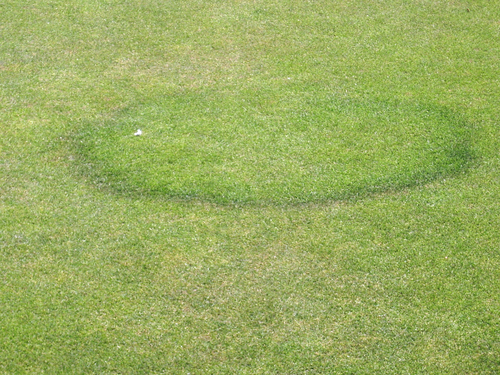
Fairy rings are a prominent circle in your lawn caused by toadstools. They either present as a dark-coloured ring of grass or a hoop-shaped bald patch over your lawn’s surface.
Fairy rings often appear at the site of a historic, felled tree. There might be no obvious sign of a tree, such as a stump, but fairy rings often feed on the dead roots of an old tree.
Fairy rings cause bald patches because something odd happens beneath the soil surface, where the fungus lives.
The fungus can live beneath the soil for many years without actively producing mushrooms. But as it grows underground, the fungus coats the nearby soil particles with a resin-like substance. And this makes the soil water-repellant, causing plants above the ground to die because their roots can’t take water from the earth.
Can I get rid of fairy rings?
There are no chemical solutions to ridding your lawn of fairy rings, so there are two principal ways of removing them:
Dig up the soil within and around the fairy ring
This approach could remove the fungus, but it’s expensive, disruptive, and not necessarily guaranteed to work if you leave dormant spores behind.
Try to reverse the water-repellence
The water-repellence of the soil is called “hydrophobia”, and this can be reversed by following these steps:
- Aerate the lawn well. Go as deep as you can around the fairy ring site.
- Scarify to remove the thatch layer that may feed the fungus and harbour fungal spores.
- Water the soil with a mix of water and washing-up liquid. Yes, you read that correctly, washing up liquid: Fairy to kill the fairy rings. The soap solution helps break down the hydrophobic resins.
- Overseed.
- Repeat after 2-3 months, and continue to do so until the new grass thrives. Then reduce to twice a year.
How to get rid of mushrooms on my lawn? – 7 ways
Unfortunately, there aren’t any effective chemical treatments that remove the recurrence of mushrooms on your lawn. It’s unlikely that digging them up will work because – as mentioned – the fungal root system is far-reaching beneath the soil.
There are, however, ways you can attack the surface problem:
1. Control your lawn’s environment
It’s crucial to differentiate mushrooms and toadstools from fungal diseases that affect your lawn. Mushrooms and toadstools don’t damage your lawn, whereas fungal diseases can kill your grass plants.
Check out our expert’s guide to fungal lawn diseases.
Surface dwelling fungi tend to thrive in environments that are:
- Moist or damp – poorly drained soil is particularly susceptible, so you should aerate your soil to improve drainage, and don’t overwater your lawn
- Shaded – damp, boggy corners and spaces protected from air flow are favoured by mushrooms and toadstools. Cut back overhanging shrubs and branches that block out sunlight while promoting better air circulation.
- Rich in organic matter – thatch layers, grass clippings, fallen leaves, decaying wood – all heaven for fungi. Scarify your lawn to remove the thatch layer.
- Warm and humid – mushrooms love moist warmth. It’s their Costa del Sol.
Attacking the causes of these environmental conditions can make your lawn less hospitable to fungi. Additionally, over-fertilising can promote fungal growth – check out our expert’s guide to fertilising your lawn to get the lowdown on effective lawn feeding.
And finally, remove animal faeces, rotting wood, and tree stumps, which are good food sources for fungi.
2. Pick the mushrooms/toadstools
The best approach to controlling the spread of lawn surface fungi is to brush the toadstools and mushrooms away as soon as they appear. This will mean that you remove them before they have time to produce their spores, preventing new growth.
So, catch them quickly and – eventually – they may cease to return.
3. Mowing mushrooms
One of the most straightforward approaches is to mow over your mushrooms, ensuring that you collect the fungus in the grass box. It won’t stop them from returning, but it will help control them. A quick fix that works every time.
Remember: mowing your mushrooms when they first appear will prevent spread.
4. Vinegar
Vinegar contains acetic acid, which kills surface mushrooms reasonably promptly. Mix 1 part of vinegar (go for a cheap supermarket variety; don’t waste your balsamic!) with 4 parts water in a hand sprayer, and spray the mushrooms. And they’ll be toast in no time.
5. Baking soda
Just like vinegar, this is an effective way of killing off the surface fungi.
Mix 1 tbsp of baking soda with a gallon of water and spray over the fungi. It will kill them off and could eventually eradicate them altogether.
6. Dish soap
As mentioned, washing up liquid can help treat fairy rings. Aerate the ground around the fungus first, then apply diluted dish soap to the fairy ring to overcome the hydrophobic soil beneath the lawn surface.
7. Fungicide
As a last resort, a fungicide will help you deal with mushrooms and toadstools, but they only really attack the fungus on the soil surface.
Fungicides coat the mushroom in a waterproof layer that prevents them from dropping their spores. But they won’t kill the unground root system.
So, unless there’s a significant problem, save your money and use one of the other methods.
Ready to get started? Or do you have more questions?
I hope you’ve got all the info you need to start identifying and controlling your lawn mushrooms but drop us an email if you have more questions.
We love to hear from you, and we’ll get back to you as soon as possible.
Thanks for reading!
And remember: never eat a mushroom that shares its name with a potential slasher flick!
FAQS
Mushrooms most often appear on moist/soggy soil in shaded spots of your garden. Fungi love warm, humid weather. Mushrooms are usually an indication of healthy soil and won’t damage your grass.
Most lawn mushrooms aren’t poisonous. But do you really want to find out the hard way? Only eat lawn mushrooms if you’re 100% certain they’re edible. If in doubt, don’t risk it!
Scientifically speaking, there’s no difference between a mushroom and a toadstool – biologically, they’re effectively the same. However, most people use the term “toadstool” to refer to poisonous mushrooms.
-
Firebugs in the Garden: What now?!Firebugs in your garden? SPOILER ALERT – they're benign! They won't harm you or your garden. Find out how these interesting bugs contribute to your garden's ecosystem.Read more
-
How to Prevent and Control Scale InsectsScale insects are tiny sap-loving insects that can kill your plants if left to their own devices. How to identify them, treat the problem, and nurse your plants back to health after an infestation.Read more
-
How to Prevent and Control Mealybugs on your Plants (and aftercare)Mealybugs look like little fluffy specks of mould, but they'll quickly destroy your house plants or greenhouse plants. Learn how to spot an infestation and what to do to prevent the problem from spreading.Read more
-
Recognise and Control Mares Tail in your garden: from Identification to EradicationMares tail (aka Horsetail) is an invasive weed with deep roots, which make it a real challenge to eradicate. Find out about this fascinating weed (and find out how to tackle the problem).Read more
-
How to get rid of flies: the best tips and tricks!Having flies buzzing around the house is not only annoying, it can pose a significant health hazard. Find out how to get rid of flies without resorting to harsh chemicals and poisons.Read more
-
Whitefly on your plant: Prevention, Control, and TreatmentWhitefly are tiny little insects that quickly kill your plants and attract ants! Find out how to prevent and control an infestation.Read more
-
How to Get Rid of Wasps: Tips and Tricks!Wasps! What a nightmare! While these aggressive little insects offer a painful sting, there's more to the wasp that you might first think. Prevent them arriving with out handy tips.Read more
-
How to Identify, Fight, and Prevent Vine WeevilThe vine weevil is a destructive little pest. Recognise the signs of infestation to prevent the widespread damage this critter can do to your garden plants.Read more
Leave a comment
Your answer will be displayed on the site and the interested party will be notified by email.
Leave a comment
Have a question or want to share your experience? Leave us a comment.

- Order by 2PM = shipped today
- 250.000+ satisfied customers!
- 60 day satisfaction guarantee

- Order by 2PM = shipped today
- 250.000+ satisfied customers!
- 60 day satisfaction guarantee

- Order by 2PM = shipped today
- 250.000+ satisfied customers!
- 60 day satisfaction guarantee

🌱 All important maintenance moments for your lawn during the year. Leave your email and we will send you the lawn calendar for free.
Enter your email
Receive the lawn calendar in the mail
Enjoy a green lawn all year round!





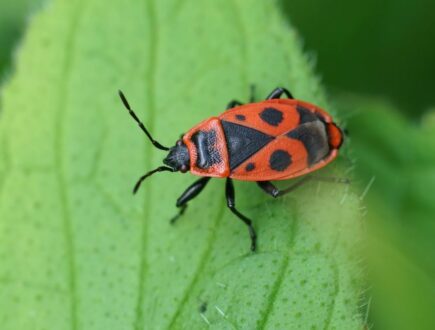
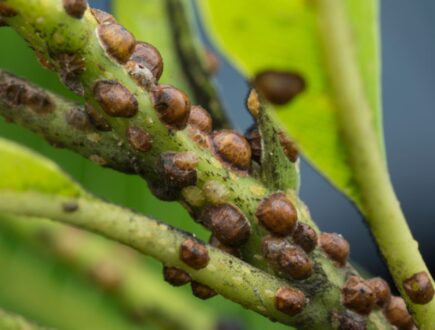
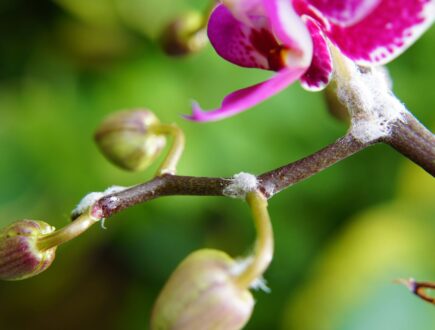

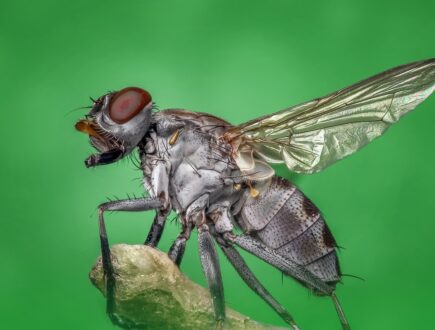
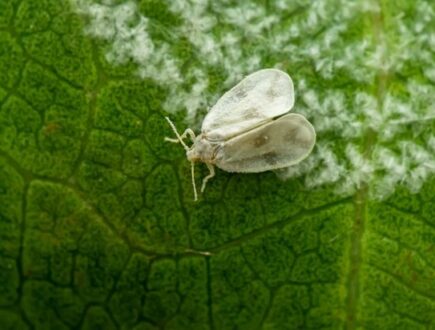
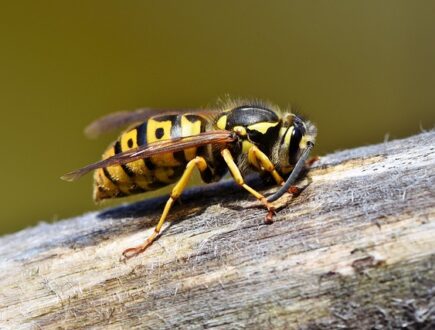
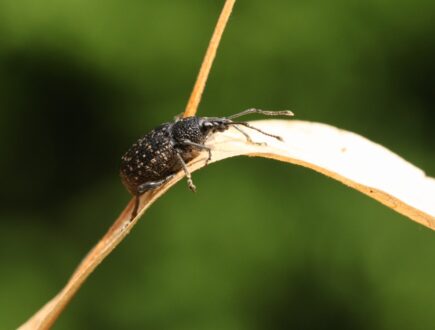



 Summer Deal! Get 15% off the
Summer Deal! Get 15% off the 




Comments (0)
There are no comments yet. Well then, what are you waiting for to
Be the first to write your comment!inaugurate this pretty page?
Do you have some comments?